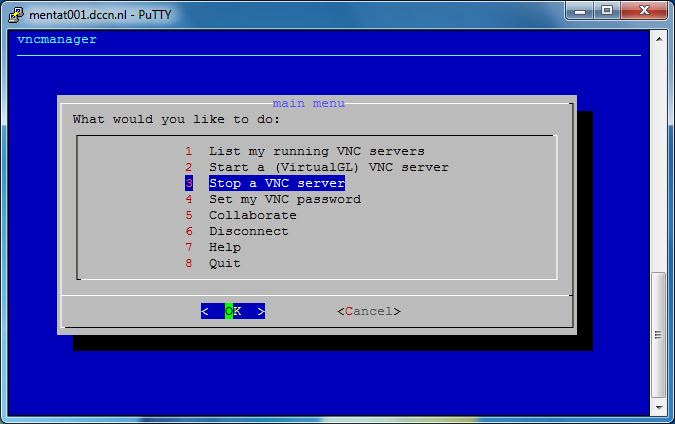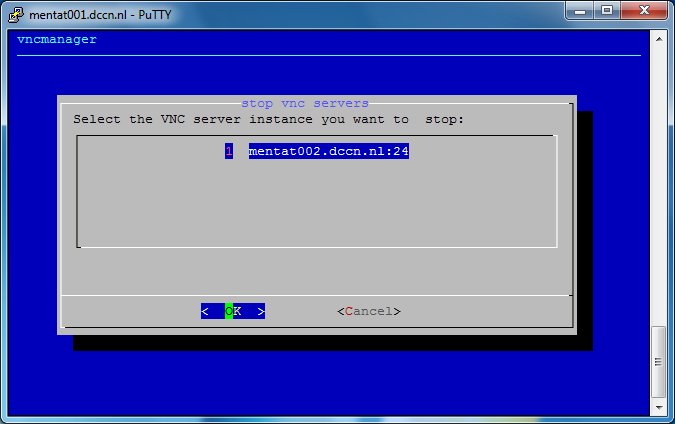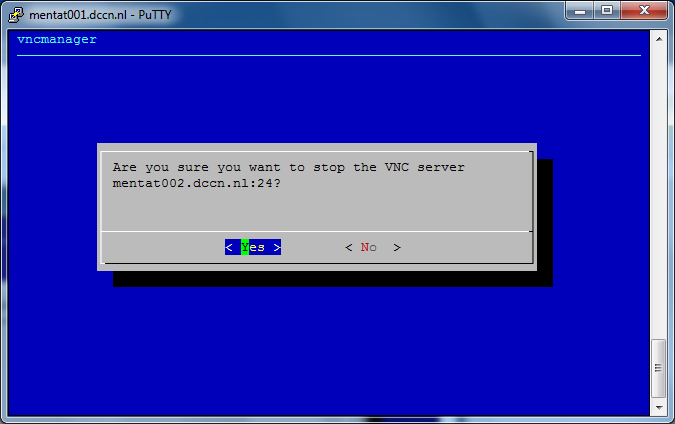Getting access to the HPC cluster
SSH login with Putty
Follow the steps below to connect to one of the cluster’s access nodes, using the SSH.
Screenshots of the four steps are shown below:
start putty on on the Windows desktop
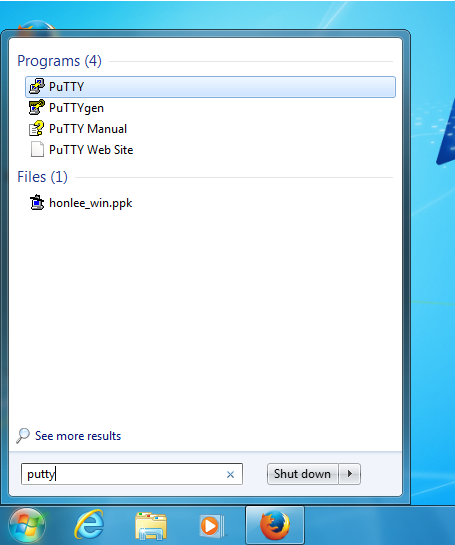
configure putty for connecting to, e.g.,
mentat001.dccn.nl
login with your username and password
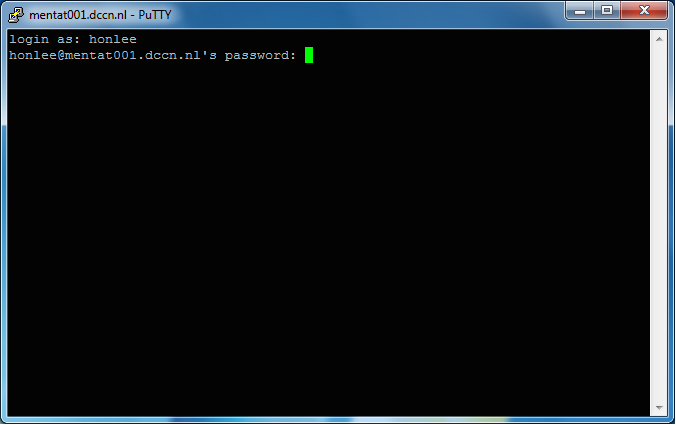
get a test-based virtual terminal with a shell prompt
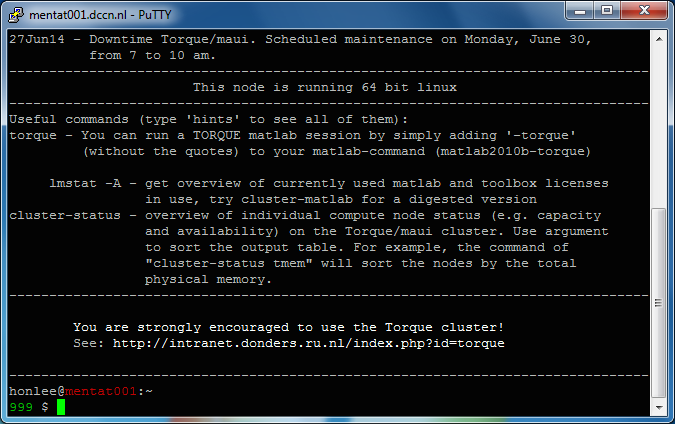
SSH logout
You can logout the system by either closing the Putty window or typing the command exit in the virtual terminal.
VNC for graphic desktop
Note
For the first-time user, type
$ vncpasswd
in the putty terminal to protect your VNC server from anonymous access before following the instructions below.
Firstly, start the VNC server by typing the following command in the putty terminal.
$ vncmanager
Follow the step-by-step instructions on the screen to initiate a VNC server. See the screenshots below as an example.
start a new VNC server
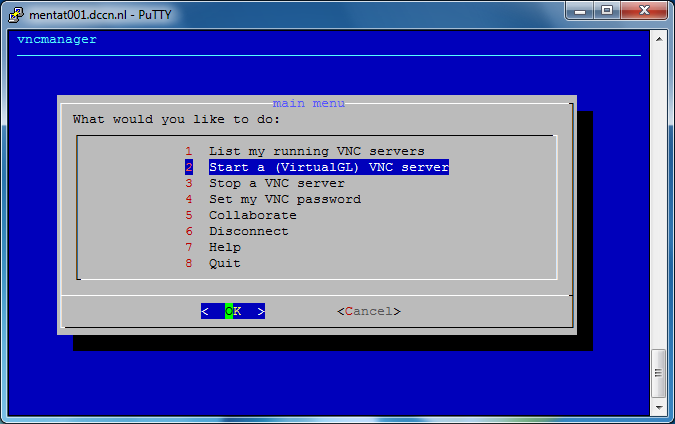
select a host
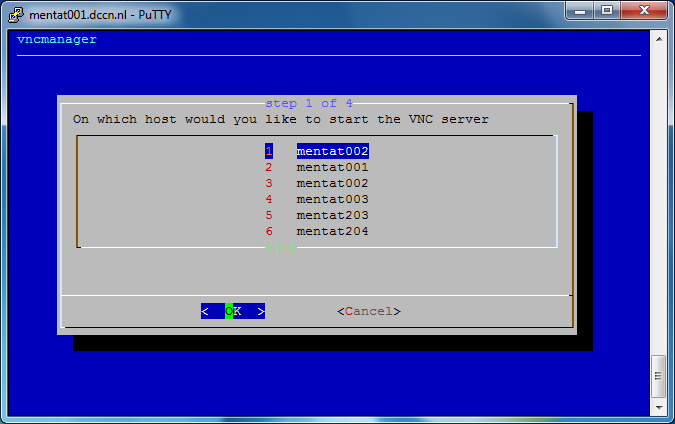
choose resolution
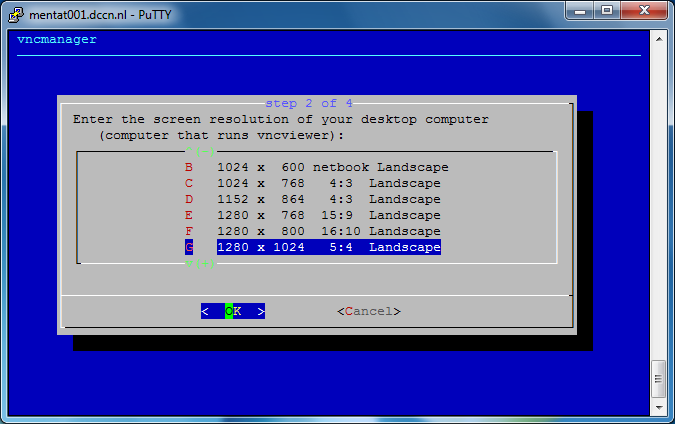
make fullscreen
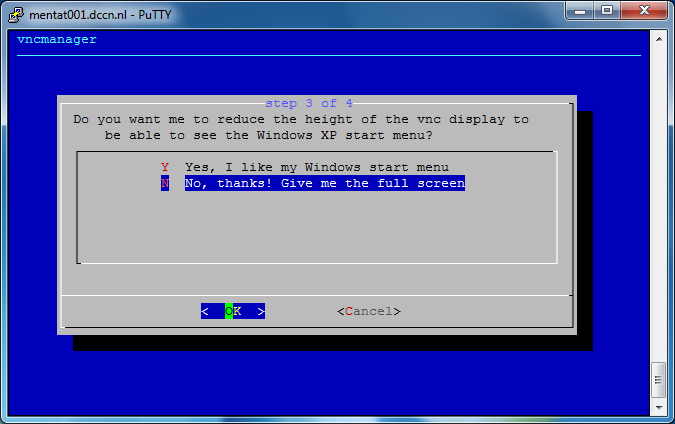
select windows manager
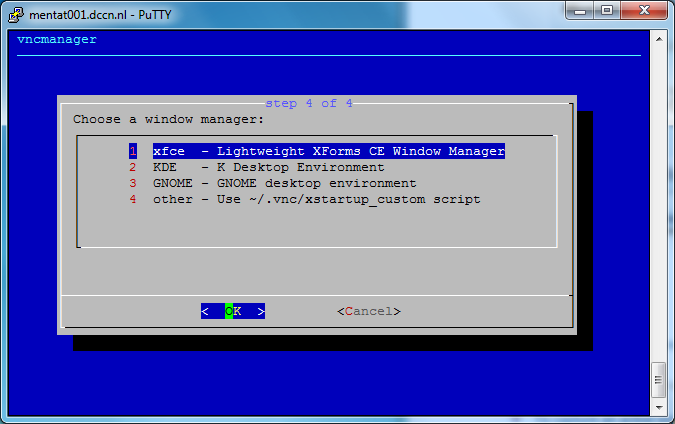
VNC server started with a display endpoint

In the screenshots above, we have started a VNC server associated with a display endpoint mentat002.dccn.nl:56. To connect to it, we use a VNC client called TigerVNC Viewer. Follow the steps below to make the connection:
Note
The display endpoint mentat002.dccn.nl:56 is just an example. In reality, you should replace it with a different endpoint given by the vncmanager.
open the TigerVNC Viewer (double-click the icon on the desktop)
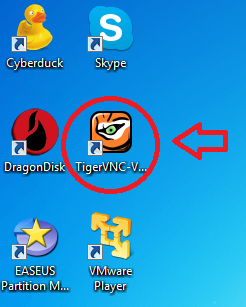
enter the display endpoint (
mentat002.dccn.nl:56) as the VNC server
enter the authentication password you set via the
vncpasswdcommand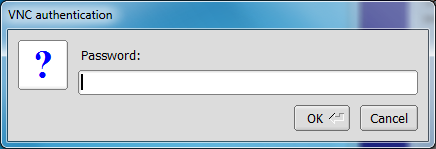
get the graphical desktop of the access node
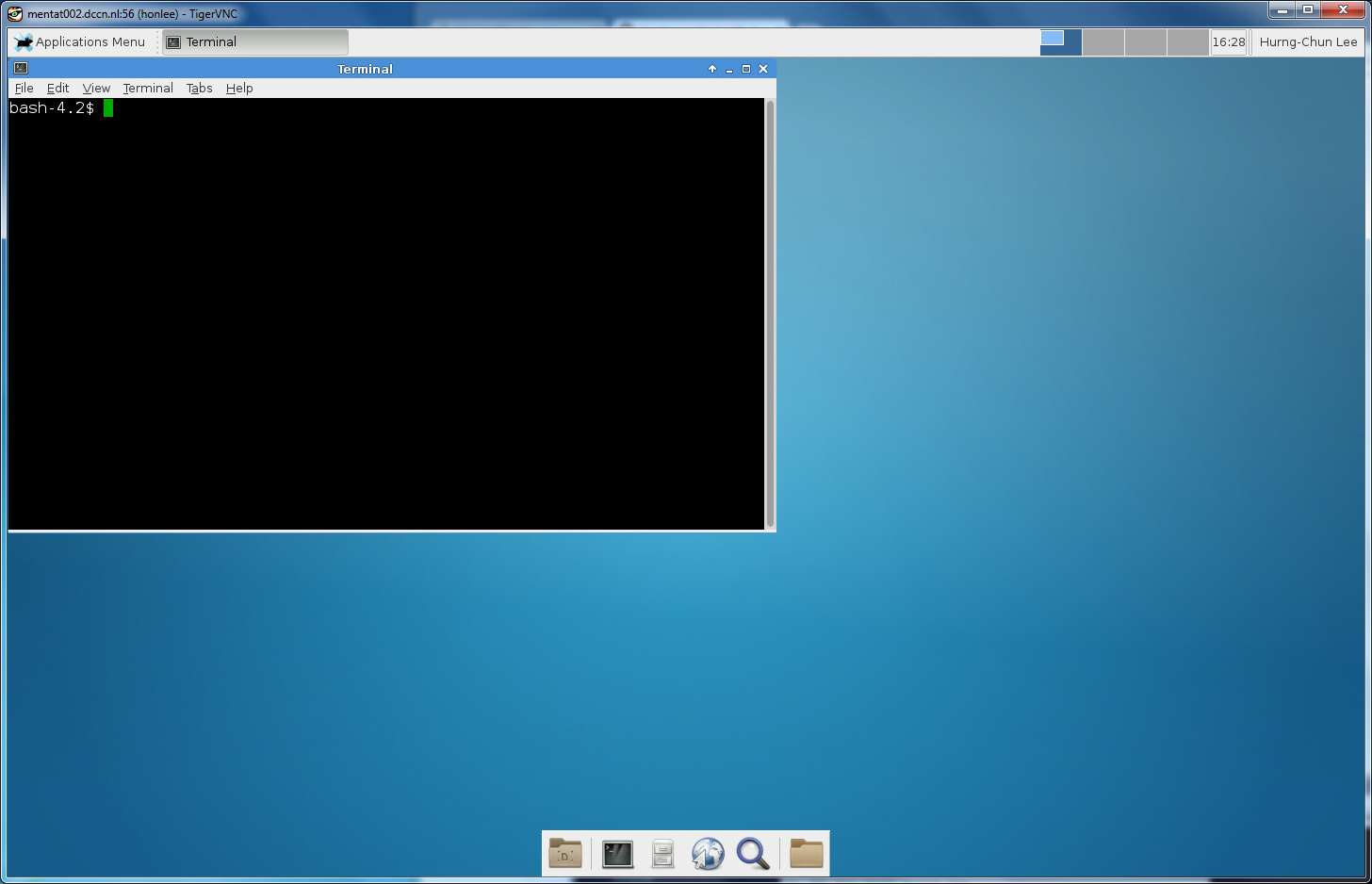
Disconnect VNC server
To disconnect the VNC server, simply close the TigerVNC-viewer window in which the graphical desktop is displayed. The VNC server will remain available, and can be reused (re-connected) when you need to use the graphical desktop again in the future.
Warning
DO NOT logout the graphical desktop as it causes the VNC server become unaccessible afterwards.
Terminate VNC server
Since the graphical windows manager takes significant amount of resources from the system, it is strongly recommended to terminate the VNC server if you are not actively using it. Terminating a VNC server can be done via the vncmanager command. The steps are shown in the screenshots below:
